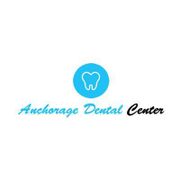A Family Dentist Shares Some Common Symptoms of Gum Disease

At its earliest stages, gum disease manifests itself as gingivitis, which consists of a mild inflammation of the gums. If gone untreated, bacteria can spread underneath your gums on the surface of your teeth, and eventually, cause your gums to recede. To help you take care of your teeth and ensure that you’re not affected by this mouth problem, the family dentists at Anchorage Dental Center have created a short checklist to determine whether or not you may have gum disease.
The next time you floss and brush your teeth, keep an eye out for the following signs that you may have gum disease:
- Inflammation: Do your gums feel tender to the touch? If they appear red or swollen, then they could be inflamed — a key symptom of gum disease. While this can be solved by brushing and flossing more regularly, you may have to go to the family dentist to prevent further issues.
 Bleeding: When you brush or floss your teeth, your gums should never bleed. If they do, this is an indication that bacteria may be growing underneath them, causing them to be inflamed. This is true regardless of how hard you brush or floss, as any sign of blood is a bad.
Bleeding: When you brush or floss your teeth, your gums should never bleed. If they do, this is an indication that bacteria may be growing underneath them, causing them to be inflamed. This is true regardless of how hard you brush or floss, as any sign of blood is a bad.- Recession: At later stages, gum disease can even cause your gums to remove themselves from your teeth, creating a recessed appearance. This is a sign you’ve waited too long to see your family dentist, so schedule an appointment immediately to receive treatment.
Knowing how to tell if you have gum disease will ensure that you get the help you need before it becomes a more serious problem. To learn more about the symptoms and treatment process, call Anchorage Dental Center at (907) 278-2521 today. Visit them online to view a complete list of services, including teeth cleaning and dental implants.
About the Business
Have a question? Ask the experts!
Send your question

